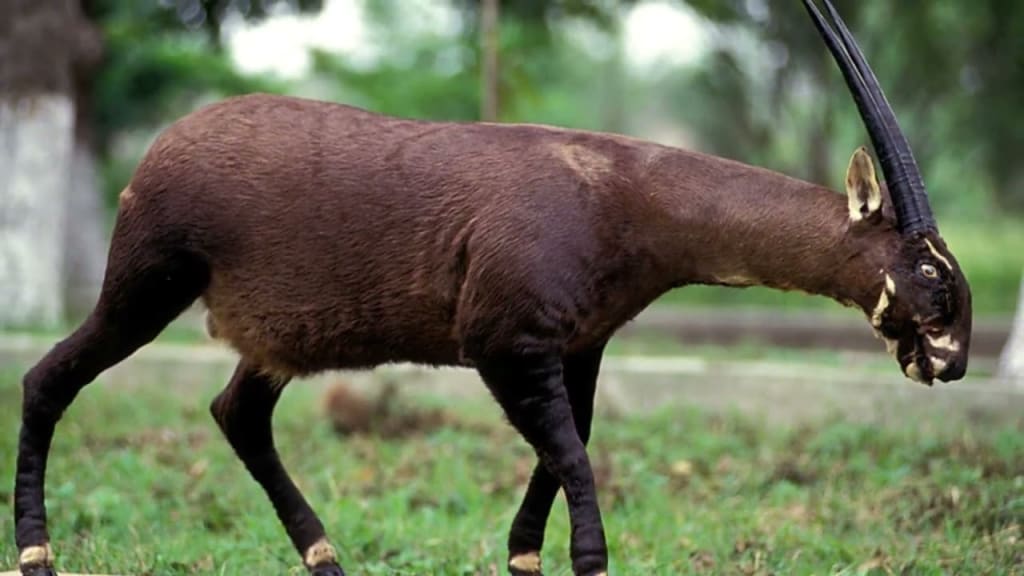Mysteries of the Forest: Intriguing Facts About the Enigmatic Saola
Saola

Here are some facts about the saola:
Unique Name:
The saola is also known as the "Asian unicorn" or the "Vu Quang ox." Its scientific name is Pseudoryx nghetinhensis.
Rare Discovery:
The saola was discovered as recently as 1992 in the Annamite Range of Vietnam and Laos. It is considered one of the rarest large mammals in the world.
Physical Appearance:
Saolas have a distinctive appearance with long, slender bodies and short, upright horns. They have striking facial markings, including white patches on the face and dark markings around the eyes.
Population Estimates:
It is challenging to determine the exact population of saolas due to their elusive nature and remote habitat. However, it is believed that fewer than a few hundred individuals remain in the wild.
Endangered Status:
Saolas are critically endangered and are listed as such on the International Union for Conservation of Nature (IUCN) Red List of Threatened Species.
Habitat:
Saolas inhabit the dense forests of the Annamite Mountains, which are located on the border between Vietnam and Laos. They are primarily found at higher elevations.
Herbivorous Diet:
Saolas are herbivores, mainly feeding on leaves, twigs, and other vegetation found in their forest habitat.
Threats:
The main threats to saolas are habitat loss due to deforestation, as well as hunting and illegal wildlife trade. They are particularly susceptible to hunting due to their rarity and the demand for their horns and body parts.
Elusive Behavior:
Saolas are incredibly elusive and are rarely seen by humans. They are known to be highly secretive and avoid human contact.
Conservation Efforts:
Conservation organizations and governments in Vietnam and Laos have been working to protect saolas and their habitat. Efforts include establishing protected areas, conducting research, and raising awareness about their conservation needs.
No Known Captive Population:
As of now, there are no known saolas held in captivity. This adds to the difficulty of studying and conserving the species.
DNA Research:
Genetic studies have revealed that saolas are one of the most primitive and distinct bovine species, representing a unique branch of the evolutionary tree.
Distinguishing Horns:
Both male and female saolas possess horns, although the horns of males tend to be longer and more robust. The horns can reach up to 20 inches (50 centimeters) in length.
Social Behavior:
Saolas are believed to be primarily solitary animals. There is limited information available about their social structure and behavior due to their secretive nature.
IUCN Red List Assessment:
The saola was first listed as critically endangered on the IUCN Red List in 1996, just four years after its discovery.
Taxonomic Classification:
The saola belongs to the family Bovidae, which includes antelopes, cattle, and goats.
Evolutionary History:
The saola is considered a "living fossil" because its lineage dates back millions of years and has remained relatively unchanged over time.
Conservation Status:
The saola is one of the world's most threatened mammals and is classified as one of the top 100 most endangered species on Earth.
International Recognition:
The saola's plight and rarity have captured international attention, and it has been recognized as a flagship species for conservation in Southeast Asia.
Habitat Preference:
Saolas are typically found in evergreen and mixed-evergreen forests, preferring areas with a high density of large trees.
Shy and Elusive Behavior:
Saolas are extremely wary of humans and quickly retreat into dense vegetation at the slightest disturbance.
Nocturnal Activity:
Saolas are primarily active during the early morning and late afternoon, with most of their activity occurring under the cover of darkness.
Vocalizations:
While not extensively studied, saolas are known to produce various vocalizations, including clicks, snorts, and nasal vocalizations.
About the Creator
Ajith Kumar
Good story teller about Sci-Fi, Adventure, thriller
Good in Pet Fishes and Pet Birds detailes
Good in General Facts
Enjoyed the story? Support the Creator.
Subscribe for free to receive all their stories in your feed. You could also pledge your support or give them a one-off tip, letting them know you appreciate their work.






Comments
There are no comments for this story
Be the first to respond and start the conversation.